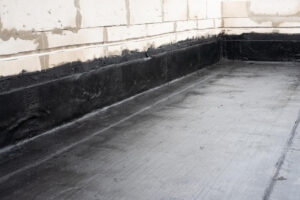Modern home construction and renovation are moving towards healthier, more sustainable practices, and for good reason. The materials used in building influence everything from air quality to energy efficiency. Using the right products enhances the aesthetic appeal of a home and contributes significantly to the well-being of its occupants and the environment. Selecting materials that promote sustainability can result in long-term savings while making an impactful statement about your values. This guide will explore various aspects of creating a healthy, sustainable home, focusing on key materials and practices.
Understanding Eco-Friendly Materials
Eco-friendly materials are those that are manufactured using processes that do not harm the environment. They often come from renewable sources, have a low environmental impact, and can be reused or recycled. One critical aspect of these materials is their life cycle assessment, which evaluates the effects of the materials from extraction to disposal.
Some popular eco-friendly options include bamboo, recycled steel, and various forms of insulation made from natural products like wool or cellulose. When selecting materials, it’s crucial to look for certifications like the Forest Stewardship Council (FSC) label, which indicates sustainable sourcing practices.
Prioritizing Indoor Air Quality
One of the most significant aspects of creating a healthy home is prioritizing indoor air quality. Poor air quality can lead to health issues, including respiratory problems and allergies. Many conventional building materials emit volatile organic compounds (VOCs) that can compromise indoor air quality.
In contrast, materials such as solid wood, natural stone, and low-VOC paints and finishes can significantly improve the air environment in your home. Using Export-Grade Wood Products adds beauty and minimizes harmful emissions. This makes them an optimal choice for maintaining a healthy atmosphere.
Energy-Efficient Choices
Energy efficiency has become a cornerstone in the quest for sustainable living. When selecting materials, consider how they contribute to your home’s energy efficiency. High-performance windows, advanced insulation, and energy-efficient appliances can drastically reduce energy consumption. They work together to keep your home comfortable while lowering utility bills.
Insulated doors and windows prevent heat loss during winter and heat gain in summer, effectively reducing reliance on heating and cooling systems. Proper insulation can eliminate drafts, making it an investment for both sustainability and comfort. Additionally, services like window tinting in OKC offer an affordable and effective way to boost energy efficiency by blocking out excessive sunlight, reducing glare, and helping maintain indoor temperature. This not only supports a more comfortable indoor climate but also contributes to lower energy usage and enhanced UV protection for interior materials.
Support Local Economies by Choosing Regional Materials
Supporting local economies while creating a sustainable home goes hand in hand. By opting for regional materials, you minimize transportation emissions associated with shipping products over long distances. Buying locally often means that you are supporting smaller, environmentally-conscious businesses that prioritize sustainability in their practices.
Regional suppliers frequently provide higher-quality materials and craftsmanship, contributing to the longevity of your building efforts. Whether you’re sourcing local stone, brick, or timber, the benefits of selecting local products extend beyond the environmental to include boosting your community economy.
Water Conservation Innovations
Water conservation is becoming increasingly important, especially in drought-prone areas. When constructing or renovating a home, incorporating water-saving technologies can significantly reduce your household’s water footprint. Installing low-flow fixtures, rainwater harvesting systems, and efficient irrigation methods can help manage water resources more effectively.
Selecting landscaping materials that require minimal irrigation, such as drought-resistant plants and native flora, can enhance your home’s sustainability by aligning your outdoor spaces with water conservation goals. Together, these strategies contribute to a more responsible use of natural resources.
Long-Term Durability and Maintenance
Choosing materials that stand the test of time is key to building a home that requires fewer repairs and replacements. Stone, metal roofing, and high-quality hardwoods are examples of materials that enhance the aesthetics of your home and resist wear and environmental stressors. While the initial cost for these materials may be higher, their longevity ensures that homeowners will save on future maintenance costs, making them a wise investment. These durable options often require less upkeep, meaning they can maintain their look and function for years without the need for costly repairs.
The long-term benefits extend beyond just financial savings. Investing in durable materials contributes to a more sustainable lifestyle. As these materials last longer, they reduce the frequency of replacements, which helps cut down on waste that often ends up in landfills. By selecting high-quality, long-lasting products, homeowners are making an environmentally responsible choice. Over time, this contributes to a healthier, more sustainable planet.
The Role of Natural Light
Natural light plays a crucial role in enhancing the quality of life within a home. Homes that allow for an abundance of sunlight create a positive, uplifting atmosphere that can have direct benefits on mental health and well-being. Exposure to natural light has been linked to improved mood and increased productivity, making spaces feel more welcoming and energizing. Incorporating more windows, glass doors, or even skylights can help make the most of sunlight and transform the living experience.

Maximizing natural light can reduce energy costs. The more light that enters a space, the less artificial lighting is needed, ultimately lowering electricity bills. By carefully considering the placement of windows and using reflective materials on walls or ceilings, homeowners can amplify the natural light inside their homes. This strategy not only brightens the living environment and contributes to sustainability, as it reduces reliance on artificial lighting and minimizes energy consumption, benefiting both the wallet and the environment.
Building for Resilience
Lasting sustainability in home design also means building for resilience. This entails designing your home to withstand local climate challenges, such as hurricanes, floods, or extreme heat. Selecting materials intended for high-stress conditions can enhance the structural integrity of your home and protect your investment.
Features like raised foundations in flood-prone areas and hurricane-resistant roofs can significantly improve your property’s ability to endure adverse weather. By considering potential climate-related effects during the design and material selection phases, you create a home that is both sustainable and resilient, extending the life of the structure and providing safety for its occupants.

Creating a healthy and sustainable home involves selecting the right materials and practices. Understanding eco-friendly options, prioritizing indoor air quality, and being mindful of energy efficiency play a substantial role in this process. Supporting local economies, conserving water, and investing in long-term durability all contribute to effective sustainability.
Maximizing natural light and building for resilience enhances both comfort and environmental responsibility in a home. With careful attention to materials and design, it’s possible to create a living space that is aesthetically pleasing and promotes health and sustainability.






